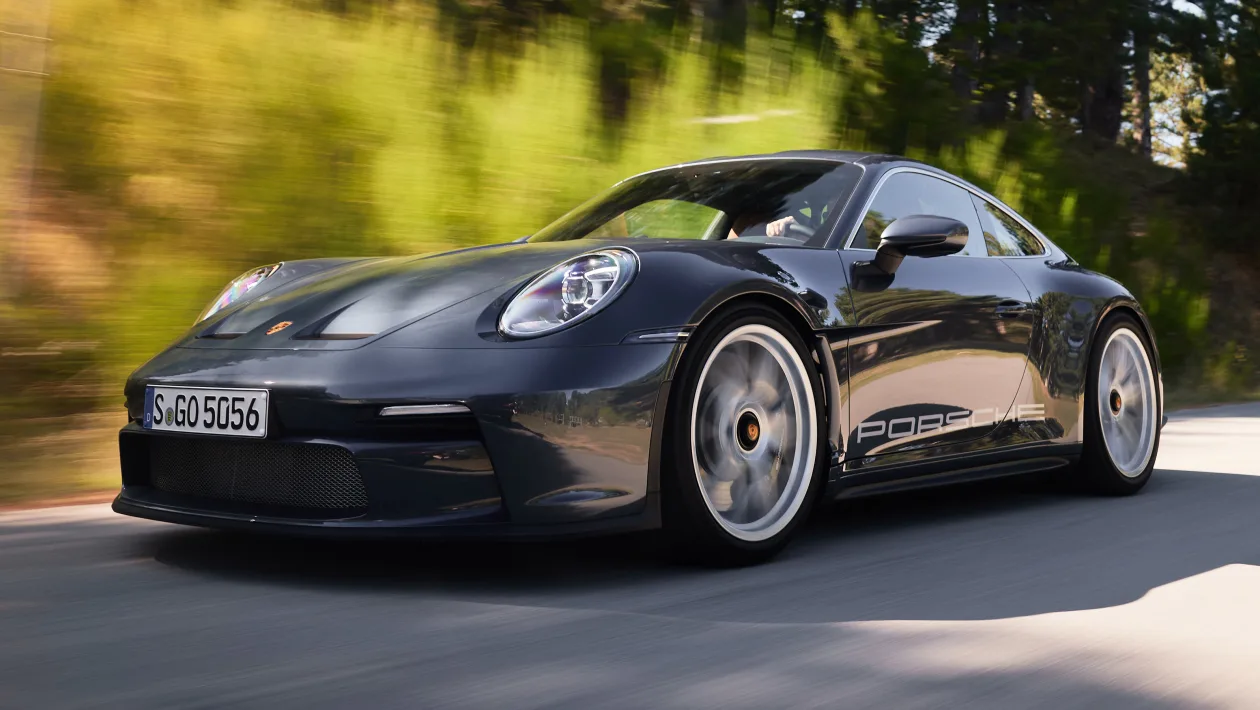Matt Prior was pleased Porsche bosses didn’t disclose the 911 S/T’s Nürburgring lap time.
I was pleased to hear Porsche GT line boss Andreas Preuninger say he didn’t know the new Porsche 911 S/T’s Nürburgring lap time.
That doesn’t mean nobody knows; a Porsche engineer confided in a colleague that they did time the S/T during testing, but they still wouldn’t say what it was. Good.
Preuninger’s point remains. Times aren’t relevant to the S/T’s ethos. It’s a road car meant for drivers. It has a manual gearbox and is bound to be slower than, say, the Porsche 911 GT3 RS, with which it shares its engine but not its aerodynamics.
The influence of the ’Ring potentially harms a sports car’s development. There are hot hatches designed primarily to set a time there, then sold to people who will probably never go to a track and wouldn’t time themselves even if they did.
Anyway, rather than all that, I would like to talk about another issue with the timing malarkey: consistency between track visits.
At a recent round of the Australian Supercars Championship, the whole field of 25 went out for a qualifying session. At the end, the top 10 were invited back for a one-lap ‘shootout’. Between qualifying and the shootout, though, drift cars went out to entertain the crowds.
They shredded their own kind of rubber and thus changed the surface. So the first out during the shootout quite suddenly found they had less grip than a few minutes earlier. Drivers variously called it “pretty dumb” and “like driving through oil”.
Over what would normally be a 1min 12sec lap, the differences added almost two seconds. It also made for notable inconsistency, because the drivers cleaned the track as they went, meaning those who ran later were able to go faster.
Those changes happened in just a fraction of a day on a very short circuit. Then consider the Nürburgring, with days, weeks or months between competing lap times.
Volkswagen test driver Benjamin Leuchter once found he was eight seconds slower in a Golf GTI Clubsport there than he had expected to be because of the conditions.
It can be dusty or sappy if nobody has raced on it recently and the ultraviolet radiation of harsh sunlight can bring greasy oils to the surface – and if it has rained, the surface gets washed of things both good and bad.
Leuchter felt it was best shortly after a race, late enough to be dry but early enough that dense air would help an engine make power.
In short, it all sounds like a large pain for not much relevance or benefit. The rather small elephant in this room is that we set lap times at the Horiba MIRA proving ground in our road tests.
In mitigation, we drive to a consistent, repeatable, 80% level, aiming to give a broad measure of performance, rather than a one-lap qualifier. It’s a barometer, not a competition. Plus the track never gets race rubber, gets regular moderate use, isn’t dusty and has no overhanging trees.
Besides, the owner is about to build a solar farm on half of it anyway, so the point will shortly become rather more moot.





